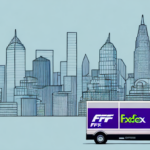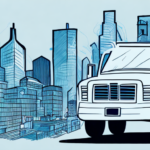Popularity and Growth of Urban Fulfillment Centers
The surge in e-commerce growth over the past decade has significantly increased the demand for efficient fulfillment solutions. Urban fulfillment centers have emerged as a strategic response to this trend, offering businesses the ability to meet the expectations of today’s fast-paced online shoppers. Located in or near major metropolitan areas, these centers enable quicker access to a dense customer base, reducing delivery times and enhancing service reliability.
According to a Forbes report, the number of urban fulfillment centers in the United States has grown by over 15% annually, driven by the need for same-day and next-day delivery options. This growth is also supported by advancements in logistics technology, which have made urban operations more feasible and cost-effective.
Benefits for E-commerce Businesses
Urban fulfillment centers provide a multitude of advantages for e-commerce businesses looking to optimize their operations:
- Reduced Shipping Costs: Proximity to customers minimizes shipping distances, leading to lower transportation expenses. A study by McKinsey & Company highlights that reducing the last-mile delivery distance can cut shipping costs by up to 30%.
- Faster Delivery Times: Being close to urban customers allows businesses to offer expedited shipping options, enhancing customer satisfaction and loyalty.
- Scalability: Urban centers often provide access to a large workforce and advanced infrastructure, enabling businesses to scale their operations efficiently during peak seasons.
Enhanced Inventory Management
Advanced inventory systems integrated into urban fulfillment centers allow for real-time tracking and management of stock levels. This ensures that popular items are always in stock and can be dispatched quickly, reducing the risk of lost sales due to inventory shortages.
Advantages for Consumers
Consumers benefit significantly from the presence of urban fulfillment centers through:
- Quicker Deliveries: Orders placed by customers in urban areas can be delivered within hours or the same day, meeting the growing demand for instant gratification.
- Improved Service Reliability: The strategic location of urban centers ensures that delivery is less likely to be delayed by unforeseen transportation issues.
- Environmental Benefits: Shorter delivery routes contribute to lower carbon emissions, aligning with the values of environmentally conscious consumers.
Environmental Impact
Urban fulfillment centers play a crucial role in reducing the environmental footprint of e-commerce operations:
- Lower Carbon Emissions: By minimizing the distance packages travel, urban fulfillment centers help decrease the overall carbon footprint associated with deliveries. The EPA reports that optimizing delivery routes can significantly lower greenhouse gas emissions.
- Sustainable Practices: Many urban centers are adopting green technologies, such as electric delivery vehicles and energy-efficient buildings. For instance, Supply Chain Dive notes that several companies are investing in renewable energy sources to power their operations.
- Waste Reduction: Urban fulfillment centers often implement recycling programs and use eco-friendly packaging materials to minimize waste.
Role of Technology in Urban Fulfillment Centers
Technology is at the heart of the efficiency and effectiveness of urban fulfillment centers:
- Automation and Robotics: Automated sorting and packing systems increase the speed and accuracy of order fulfillment. According to TechRadar, the integration of robotics can boost fulfillment rates by up to 50%.
- Real-Time Tracking: Advanced tracking systems provide real-time updates on inventory levels and shipment statuses, improving transparency and reliability.
- Artificial Intelligence: AI-driven analytics help optimize warehouse layouts, predict demand trends, and manage resources more effectively.
Innovative Delivery Solutions
Emerging technologies such as drone deliveries and autonomous vehicles are being piloted in urban areas to further enhance delivery efficiency. For example, companies like Amazon are exploring drone delivery to reduce delivery times and increase accessibility in congested urban environments.
Challenges and Solutions
Operating urban fulfillment centers comes with its set of challenges, which businesses must address to ensure success:
- High Real Estate Costs: Urban real estate is expensive, which can increase operational costs. Solutions include utilizing multi-story warehouses and optimizing space through vertical storage systems.
- Labor Shortages: Attracting and retaining a skilled workforce in urban areas can be difficult. Offering competitive wages, benefits, and opportunities for advancement can mitigate this issue.
- Regulatory Compliance: Navigating complex zoning laws and regulations is essential. Building strong relationships with local authorities and staying informed about legislative changes can help businesses remain compliant.
Innovative Space Utilization
To combat high real estate costs, some businesses are repurposing existing buildings, such as warehouses or even retail spaces, into fulfillment centers. This not only reduces costs but also allows for quicker setup and integration into the urban fabric.
Future Trends in Urban Fulfillment
The landscape of urban fulfillment centers is continuously evolving, driven by technological advancements and changing consumer expectations:
- Increased Automation: The use of AI and machine learning will further streamline operations, making fulfillment centers more efficient and reducing the need for manual labor.
- Integration with Smart Cities: As cities become smarter, fulfillment centers will integrate with urban infrastructure, utilizing data from traffic systems and IoT devices to optimize delivery routes and schedules.
- Sustainability Focus: The push towards greener operations will lead to more urban centers adopting renewable energy sources, electric vehicles, and sustainable packaging solutions.
- Personalization: Enhanced data analytics will enable more personalized fulfillment strategies, tailoring services to meet the specific needs and preferences of different customer segments.
According to a McKinsey report, the next generation of urban fulfillment centers will increasingly focus on integrating advanced technologies and sustainable practices to meet the demands of the modern market.
Conclusion
Urban fulfillment centers are revolutionizing the e-commerce landscape by providing efficient, scalable, and sustainable solutions for businesses and consumers alike. As technology continues to advance and consumer expectations evolve, the role of urban fulfillment centers will become even more critical in shaping the future of retail and logistics. Businesses that invest in these centers and adapt to emerging trends will be well-positioned to thrive in the competitive world of online commerce.





















